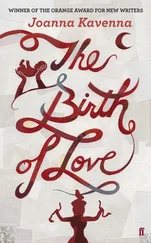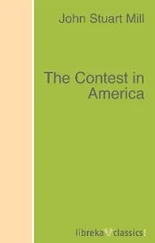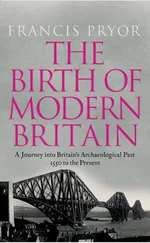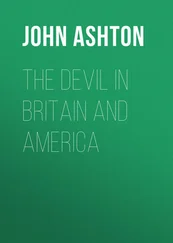That serene sense of superiority that had characterized pre‐war America shattered. Had the war made “the world safe for democracy”? Had the Armistice ended the war that would “end all wars”? Was Wilsonian idealism guiding the building of a postwar world? For many, especially among the young, the answer to all of these questions was a resounding NO.
The war would lead to bitter racial conflict at home. Even before U.S. entry into the war in April 1917, the “Great Migration” of African Americans from the South had begun. They were moving north in search of economic opportunities and an escape from segregation, discrimination, and lynching. They were successful in finding jobs because the war effectively cut off immigration from Europe. The jobs paid considerably more than these people had earned in the South.
Blacks took jobs that previously had gone to Poles, Italians, Lithuanians, and other southern and eastern European newcomers. Whites, especially immigrants and their children, bitterly resented the African Americans. They saw them as potential strikebreakers. They complained that the competition for housing drove up rents. Race relations became more and more volatile. The 1917 riot in East St. Louis was a bloody indicator of things to come. Ida Wells‐Barnett, famed for her long campaign against lynching, went to the city at the behest of a black organization in Chicago. Historians have not had to correct her account:
the rioting started on the morning of July 2nd, when the workers were coming off the 11 o’clock shift at the factories and packing plants. The cause was alleged to be the killing of two white police officers who had been shot by colored men when they went into the Negro district on the Denver side to quell a supposed riot. These colored men said that an automobile had gone through the neighborhood firing right and left into the windows of the houses and of the church. A bell was rung and the men rapidly came together at the church to plan for resisting other attacks of similar character. When a second automobile came on the scene very soon after, they thought it were the same parties, and fired into it after a parley, wounding two officers who afterwards died.…
When the officers were killed in the unfortunate mixup of July 1st, it gave excuse for the breaking out of the mob composed largely of union workers and the Negro haters who gathered from small towns surrounding, and even from the South. Horrible stories were given both by eye witnesses as well as by others, the saddest part of them all being, that in every instance, as the mob set upon men coming from their work at 11 o’clock in the day, the soldiers or the police held up the black men, searched them and even took their pocket knives, then left them at the mercy of the mob. In all that disgraceful twenty‐four hours of rioting, murder and arson, not a shot was fired by the militia.
Indeed, according to General Dickson, the state militia were given orders not to shoot white men and women, and they stood by and saw the most brutal savagery perpetrated without lifting a finger for protection or punishment for those who did murder, committed arson or burned up little children and old people. 2
There would be dozens of similar race riots, the worst being in Chicago in 1919 and in Tulsa in 1921.
Also in 1917, copper companies in Bisbee, Arizona, “deported” workers who had joined the Industrial Workers of the World (IWW), a radical union that opposed American entry into the war, to New Mexico. Local sheriffs deputized volunteers, who then rounded up IWW supporters, herded them into a baseball field, and then marched them to the railroad station and packed them into freight cars. The federal government investigated and found that the companies’ actions were illegal, but that they violated state rather than federal law. No one was ever convicted. Many of those deported were immigrants from Europe; many others were Mexicans or Mexican Americans.
Nativist hostility only increased. Over President Wilson’s veto, Congress passed an immigration restriction bill. It imposed a literacy test. A large percentage of immigrants from eastern and southern Europe could not read or write. When passed in 1917, the law was largely symbolic because the war had brought immigration to a virtual halt. When it resumed in the latter part of 1919, the literacy test proved to be entirely ineffectual. Immigrants had learned to read; they knew that otherwise they would be turned away. The literacy test would be replaced by the Emergency Quota Act, which established quotas for countries sending emigrants to the United States. The Johnson‐Reed Act of 1924 set permanent quotas using the 1890 Census. Why 1890 and not 1920? The year 1890 marked the start of the so‐called new immigration from southern and eastern Europe. Advocates of restriction wanted to reduce the total number of immigrants; they especially wanted to reduce the numbers of Italians, Poles, Russian Jews, Greeks, and other supposedly inferior peoples.
It is difficult to overstate the importance of the Johnson‐Reed law. With the exception of the Chinese Exclusion Act of 1882 and the Gentlemen’s Agreement of 1907 with Japan, both of which excluded immigrants from those countries, the United States had pursued a policy of admitting all comers provided that they did not bring with them a communicable disease. This changed beginning in 1917, when Congress passed – over President Wilson’s veto – the literacy test for immigrants. When trans‐Atlantic passenger service resumed in 1919, it continued to have little impact. Potential immigrants had learned to read, and a measure intended to keep down the numbers from eastern and central Europe failed to do so. This led Congress to pass the Emergency Quota Act in 1921 and then the Johnson‐Reed Act three years later. A look at the quotas imposed showed that migration from those parts of Europe virtually ceased (see table).
Immigration Quotas under the Johnson‐Reed Restriction Act
| Northwest Europe and Scandinavia |
Eastern and Southern Europe |
Other Countries |
| Country |
Quota |
Country |
Quota |
Country |
Quota |
| Germany |
51,227 |
Poland |
5,982 |
Africa (other than Egypt) |
1,100 |
| Great Britain and Northern Ireland |
34,007 |
Italy |
3,845 |
Armenia |
124 |
| Irish Free State (Ireland) |
28,567 |
Czechoslovakia |
3,073 |
Australia |
121 |
| Sweden |
9,561 |
Russia |
2,248 |
Palestine |
100 |
| Norway |
6,453 |
Yugoslavia |
671 |
Syria |
100 |
| France |
3,954 |
Romania |
603 |
Turkey |
100 |
| Denmark |
2,789 |
Portugal |
503 |
Egypt |
100 |
| Switzerland |
2,081 |
Hungary |
473 |
New Zealand and Pacific Islands |
100 |
| Netherlands |
1,648 |
Lithuania |
344 |
All others |
1,900 |
| Austria |
785 |
Latvia |
142 |
|
|
| Belgium |
512 |
Spain |
131 |
|
|
| Finland |
471 |
Estonia |
124 |
|
|
| Free City of Danzig |
228 |
Albania |
100 |
|
|
| Iceland |
100 |
Bulgaria |
100 |
|
|
| Luxembourg |
100 |
Greece |
100 |
|
|
|
|
|
|
|
|
| Total (number) |
142,483 |
Total (number) |
18,439 |
Total (number) |
3,745 |
| Total (%) |
86.5 |
Total (%) |
11.2 |
Total (%) |
2.3 |
|
|
|
|
|
|
| (Total annual immigrant quota: 164,667) |
|
|
|
|
|
The Wilson administration, despite the president’s veto of the literacy law, fanned the flames of nativism. It established the Committee on Public Information soon after the American declaration of war. Director George Creel defined its mission as bringing patriotism, defined as support for the war, to a “white hot” level. This included censoring the foreign language press, sending out “Four Minute Men” to give brief speeches at movie theaters, promoting the sale of war bonds, and organizing “I Am an American” Day parades on the Fourth of July. States created their own Councils of National Defense, which organized Americanization programs. So did the national government. Both the Bureau of Education and the aturalization bureau sought to control public school programs for immigrants. Neither succeeded.
Читать дальше












